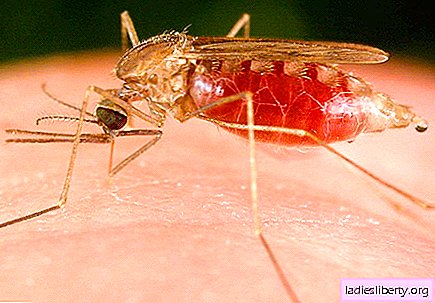
Varicose disease, or varicose veins, is understood to mean pathology, which is manifested by the expansion of superficial veins, the thinning of their walls and the formation of nodules - areas with saccular protrusions. This is a very common vascular disease, which affects up to 28% of women and 20% of men.
Varicose veins can cause many complications: cellulitis, bleeding, thrombosis, dermatitis and trophic ulcers. Due to the development of varicose veins and its complications, the patient may for a long time lose his ability to work or even become disabled.
Varicose veins - the causes of the disease
One of the serious causes of varicose veins is heredity. That is, people whose close relatives suffer from this disease are more susceptible to it, because of the ability to be inherited due to the ability of the congenital weakness of the venous wall, which predisposes to the development of varicose veins.
Women are 2 times more likely to suffer from varicose veins than men. They are more prone to the disease due to the cyclical increase in the extensibility of the walls of the veins and loosening of the valves, associated with an increase in the concentration of the hormone progesterone. Also, doctors do not exclude that the cause of women’s susceptibility to varicose veins is the prolonged wearing of high-heeled shoes.
Another reason for the development of varicose veins is age. According to medical statistics, most often the development of the disease begins after 45 years. However, it can also appear in younger people.
Also, a sedentary lifestyle or work that requires a long stay while standing contributes to the occurrence of varicose veins; in athletes, on the contrary, it can occur due to intense physical exertion. Varicose veins can develop due to obesity or overweight, as well as due to chronic liver diseases: hepatitis or cirrhosis.
Varicose veins - symptoms
At first, patients may not pay attention to the symptoms of the disease. With the progression of the disease, varicose veins can be recognized by the appearance of nodular swelling on the lower extremities along the veins, pain and heaviness in the legs, a feeling of warmth and burning in the veins, night cramps in the legs and swelling in the evening.
In the absence of treatment, the pains become permanent, the veins expand more and more, this leads to the formation of ulcers on the skin, venous insufficiency and thrombophlebitis.
Varicose veins - diagnosis
The appearance of the first symptoms of varicose veins is a reason to immediately consult a doctor, a vascular surgeon who treats blood vessel diseases. He will examine the legs and, if necessary, prescribe additional examinations, which are presented today:
- duplex scanning (ultrasound of veins) - the most informative method for diagnosing varicose veins of the legs, giving an idea of the degree of expansion of the veins, the direction of blood flow through the veins and their patency, as well as detect the presence of blood clots (blood clots);
- contrast venography, which is an examination method that allows you to detect dilated veins and learn about the degree of patency for blood.
Varicose veins - treatment and prevention
When choosing a treatment for varicose veins, the stage of development of the disease, the age of the patient and the presence of complications are taken into account. Treatment consists in the use of conservative methods (without surgery) and surgical intervention.
Conservative treatment of varicose veins is acceptable in the early stages of the disease, proceeding without pronounced symptoms and complications. It consists in following a diet, special physical exercises (brisk walking, gymnastics, swimming and water exercises), compression treatment (wearing elastic bandages or tights), as well as taking medications that regulate the tone of veins.
If conservative treatment is ineffective, surgery is performed, which consists in removing the affected veins or introducing solutions that stick together the walls of the affected vessel.











